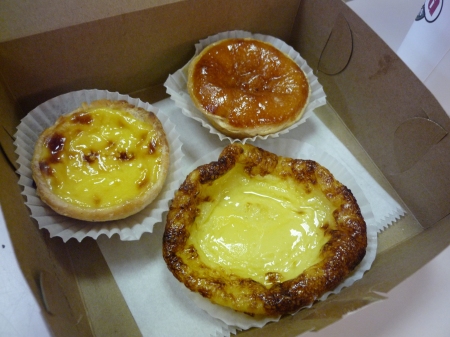Portland has more of a sense of humor than you might expect from Portlandia. But it’s still not a biting humor. It’s more mildly self-deprecating and still more earnest than anything you would find in New York. Even the mustachioed baristas serving important coffee have kind, open, and beautiful faces. If every man with a mustache was as beautiful as the one at Stumptown, then I say, mustaches for all!
It was a very short trip, and I admit I felt too self-conscious to photo-document everything I ate. We ate at Portland favorites like Tasty n Sons and Pok Pok, where the food and vibe were deliciously casual, not necessarily better than food I might get in New York, but without any weariness or attitude.
We went to the Good Food Here food cart pod for lunch on Saturday, where the hits were Lardo’s porchetta (oozing with fat and infinitely better than the dull Porchetta at the Brooklyn Flea) and “dirty” fries which are tossed with bits of pork. But really, everything we ate was satisfying and made with care.
And Sunday brunch was made at our rental home with eggs, onions and herbs, smoked salmon, the best Jarlsberg ever (which is a greater endorsement than you might think), and Tails and Trotters‘ incredible bacon and “Mojo” pulled pork from the Portland farmers’ market at Portland State University. My friend was standing in line for tamales (also excellent), when the friendly woman behind her told us we had to get the bacon at T&T. In my Brooklyn artisanal-weariness, I almost dismissed this idea. I don’t even liked pulled pork — it’s usually so boring — but both the pulled pork and the bacon had wonderful, easygoing seasonings that were just interesting enough, but still deferential to the porkiness of the pork.
The market also had the deepest, darkest peonies I’ve ever seen. And a didgeridoo player, with children and random adults awkwardly but happily dancing to its weird sounds.
My friends and I aren’t big drinkers, at least as a group, but I was glad we got a pre-dinner drink the McMenamins Kennedy School, which is an elementary school converted into a hotel, complete with brewery, bars, movie theater, and soaking pool. The soaking pool looked wonderful (and only $5 per hour!), but I can’t understand how they make money. The pubs were so small, including the Detention Bar we sat in. There’s a tremendous amount of care and thought put into the semi-retro, semi-Deco atmosphere, but the drinks didn’t seem so expensive, and the room rates are quite reasonable. It’s a wild and all-encompassing business, from hotel to restaurant to distillery — the White Dog whiskey I had from Edgefield Distillery was lovely.
 Even the changeable weather was beautiful in its own way.
Even the changeable weather was beautiful in its own way.
There were plenty of tattooed, pierced, Potlandia-type characters to look at, but this is a city that offers, in its own sweet way, to fix bad tattoos.










































